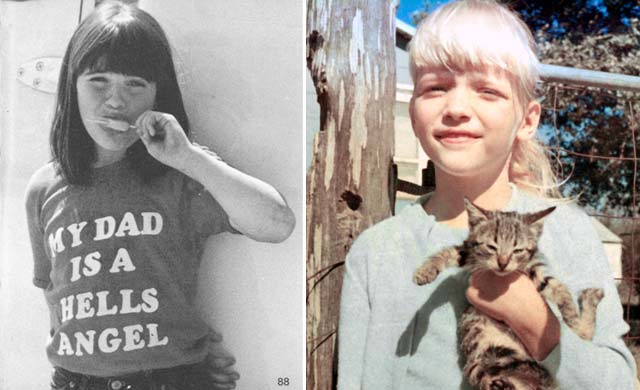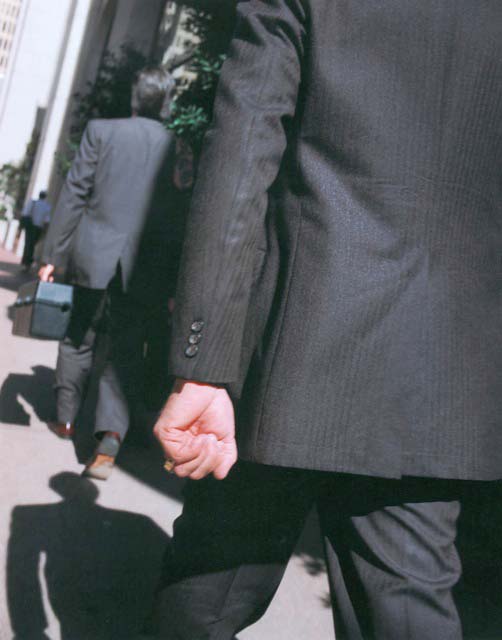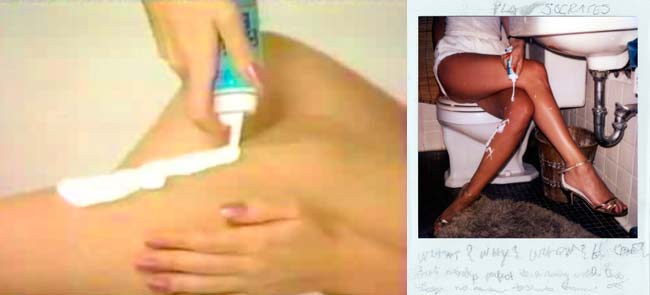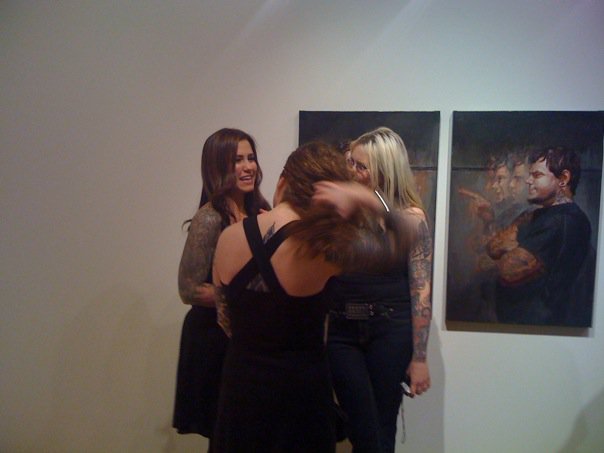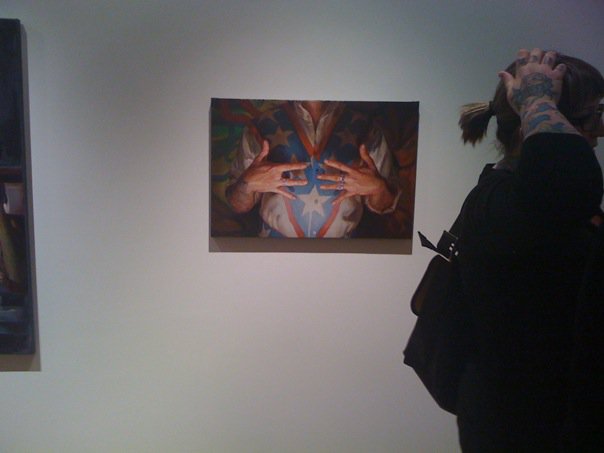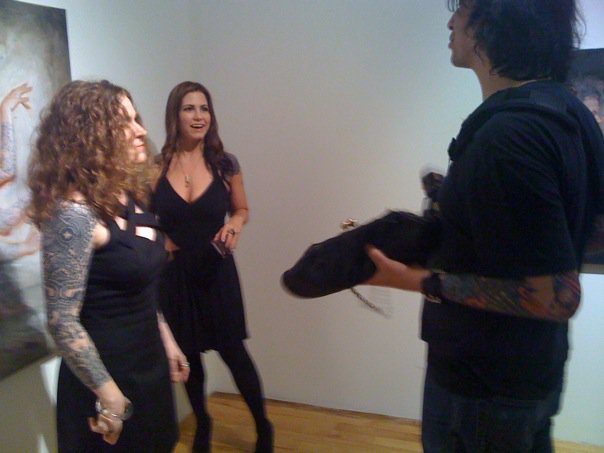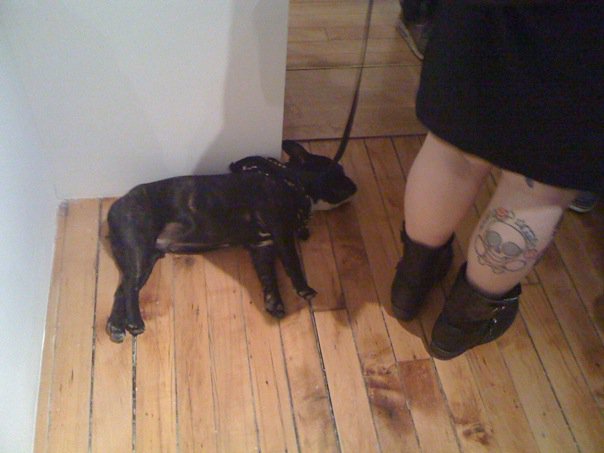
Humans produce about 50 distinct types of smiles but there’s one distinction that really matters: between real and fake.
If we can tell the people who are showing what they’re feeling from the people who are faking it, then we’ve got a really good indicator of who to trust and work with.
{ PsyBlog | Continue reading }
psychology, relationships |
April 29th, 2010
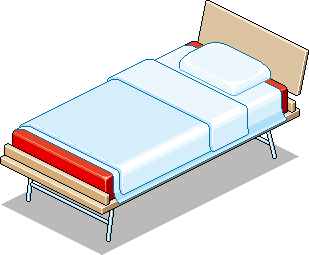
From birth, we spend a third of our lives asleep. After decades of research, we’re still not sure why. (…)
If we don’t know why we can’t sleep, it’s in part because we don’t really know why we need to sleep in the first place. We know we miss it if we don’t have it. And we know that no matter how much we try to resist it, sleep conquers us in the end. We know that seven to nine hours after giving in to sleep, most of us are ready to get up again, and 15 to 17 hours after that we are tired once more. We have known for 50 years that we divide our slumber between periods of deep-wave sleep and what is called rapid eye movement (REM) sleep, when the brain is as active as when we’re awake, but our voluntary muscles are paralyzed. We know that all mammals and birds sleep. A dolphin sleeps with half its brain awake so it can remain aware of its underwater environment. When mallard ducks sleep in a line, the two outermost birds are able to keep half of their brains alert and one eye open to guard against predators. Fish, reptiles, and insects all experience some kind of repose too.
All this downtime comes at a price. An animal must lie still for a great stretch of time, during which it is easy prey for predators. What can possibly be the payback for such risk? “If sleep doesn’t serve an absolutely vital function,” the renowned sleep researcher Allan Rechtschaffen once said, “it is the greatest mistake evolution ever made.”
The predominant theory of sleep is that the brain demands it. This idea derives in part from common sense—whose head doesn’t feel clearer after a good night’s sleep? But the trick is to confirm this assumption with real data. How does sleeping help the brain? The answer may depend on what kind of sleep you are talking about. Recently, researchers at Harvard led by Robert Stickgold tested undergraduates on various aptitude tests, allowed them to nap, then tested them again. They found that those who had engaged in REM sleep subsequently performed better in pattern recognition tasks, such as grammar, while those who slept deeply were better at memorization. Other researchers have found that the sleeping brain appears to repeat a pattern of neuron firing that occurred while the subject was recently awake, as if in sleep the brain were trying to commit to long-term memory what it had learned that day.
Such studies suggest that memory consolidation may be one function of sleep. Giulio Tononi, a noted sleep researcher at the University of Wisconsin, Madison, published an interesting twist on this theory a few years ago: His study showed that the sleeping brain seems to weed out redundant or unnecessary synapses or connections. So the purpose of sleep may be to help us remember what’s important, by letting us forget what’s not.
{ National Geographic | Continue reading }
related { Fatal familial insomnia | Thanks Anthony! }
sleep |
April 29th, 2010

Wildlife experts are hunting a rogue bull elephant in southern India accused of killing at least 10 female elephants during a testosterone-induced ’sex rampage’.
{ Metro.co.uk | Continue reading }
animals, haha, incidents, sex-oriented |
April 29th, 2010

“Leaves have evolved over millions of years to optimize light collection, transport of nutrients to and from the plant body, and mechanical stability against natural stresses,” says David Young a physicist at the Lawrence Livermore National Laboratories near San Francisco.
The puzzle is how leaves grow into such a wide variety of similar shapes. What process can control this growth? Clearly, there is a genetic component to leaf growth but that cannot be the whole story because leaves on the same plant sometimes grow into different shapes, a phenomenon known as heteroblasty. That’s because environmental factors such as nutrition, sunlight also influence growth and shape.
Various theories attempt to explain leaf shape using ideas such as fractals and the Turing reaction-diffusion process. But none provide a convincing explanation for the variety of leaf shapes that occur in nature.
Today, Young attempts to change that by putting forward a simple model of leaf growth that reproduces much of the spectrum of leaf shapes that appear in nature. (…) In his model, the growth of leaf lobes is governed by the position of leaf veins. The leaf then simply grows in 2 dimensions in a way that is governed by a simple algorithm. It is this growth pattern that determines the ultimate shape of the leaf. In Young’s model, the final leaf shape is really an accidental by product of this growth process.
{ The Physics arXiv Blog | Continue reading }
photo { Ye Rin Mok }
Botany, science |
April 29th, 2010

“You” and “I” need to talk about “us”: Linguistic patterns in marital interactions
Links between pronoun use, relationship satisfaction, and observed behavior were examined during 2 problem-solving interactions in which 134 distressed and 48 nondistressed couples participated. Results supported hypotheses that distressed and nondistressed couples would use pronouns at significantly different rates, and that rates would also differ for partners depending on whose topic was being discussed. Actor–partner interdependence models (APIMs; D. A. Kenny, 1996) revealed actor and partner effects of pronoun use on satisfaction and observed positivity and negativity. Interestingly, I-focus pronouns were found to be linked with satisfaction in distressed partners and dissatisfaction in nondistressed partners. The pattern of findings was otherwise largely consistent across topics and levels of distress.
{ Personal Relationships, Vol. 17 Issue 1 | via InterScience }
photo { Sarah Mclean }
Linguistics, relationships |
April 29th, 2010
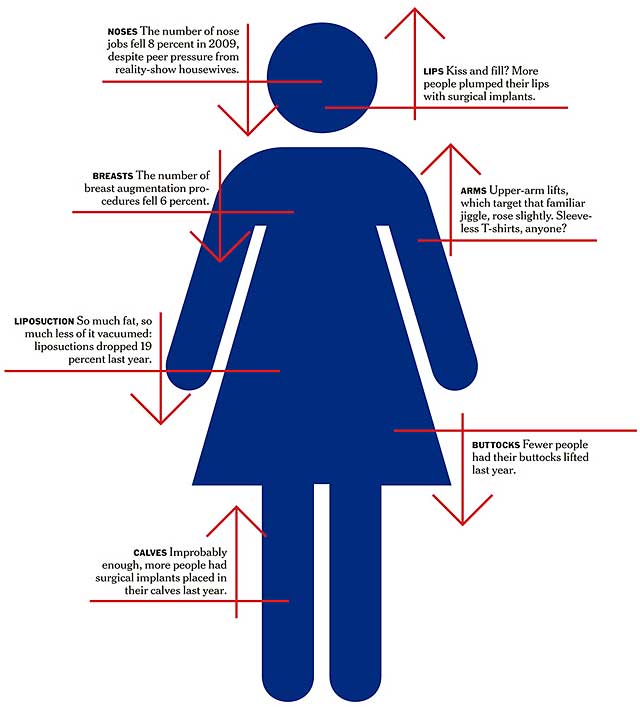
{ Cosmetic surgery wasn’t as popular in 2009 as it used to be, according to the American Society of Plastic Surgeons. | NY Times | full story }
economics, health |
April 29th, 2010

A recent study examined the correlation between chocolate consumption and self-reported depression symptoms. (…)
The authors caution that cross-sectional studies have limited ability to explain correlations and are open to spurious findings. They note there findings are compatible with several possibilities:
• Depression drives craving for chocolate as a self-treatment
• Depression drives craving for chocolate for other reasons
• Chocolate may contribute to depressive symptoms
• A physiological factor could drive both depressive symptoms and chocolate consumption
• A more complex undefined relationship could exist
I’d vote for the last option. (…)
To be balanced, it must be noted that other studies found positive health associations with chocolate intake. In an older sample of Finnish men, chocolate preference as a sweet was linked to better overall health, optimism and better psychological well-being.
{ Brain Posts | Continue reading }
food, drinks, restaurants, psychology, science |
April 29th, 2010
economics, photogs |
April 29th, 2010
fashion, psychology |
April 29th, 2010
art, new york, tattoos |
April 29th, 2010
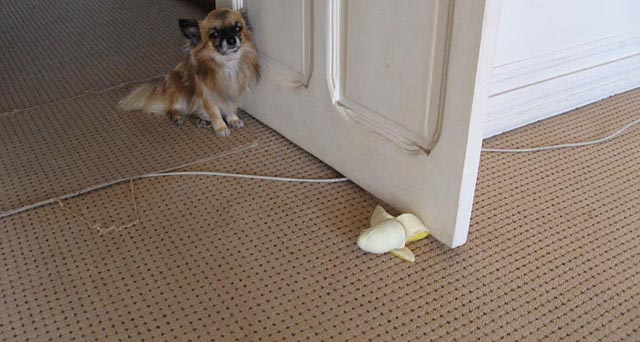
Frank settled down in the Valley and he hung his wild years on a nail that he drove through his wife’s forehead. He sold used office furniture out there on San Fernando Road and assumed a 30,000 dollar loan at fifteen and a quarter percent put a down payment on a little two bedroom place. His wife was a spent piece of used jet trash. Made good Bloody Mary’s. Kept her mouth shut most of the time. Had a little Chihuahua named Carlos that had some kind of skin disease and was totally blind. They had a thoroughly modern kitchen. Self-cleaning oven, the whole bit. Frank drove a little sedan. They were so happy. One night Frank was on his way home from work. He stopped at the liquor store. Picked up a couple of Mickey’s Big Mouths. Drank ‘em in the car, and with a Shell station he got a gallon of gas in a can. Drove home, doused everything in the house. Torched it. Parked across the street laughing. Watching it burn. All Halloween orange and chimney red.
Then Frank put on a top forty station. Got on the Hollywood Freeway and headed North. Never could stand that dog.
{ Tom Waits, Frank’s Wild Years lyrics | Tom Waits on David Letterman Show, 1983 }
photo { nsw/d }
dogs, experience |
April 29th, 2010

Usually when you see people who have been stung by box jellyfish with that number of the tentacle contacts on their body, it’s usually in a morgue. (…) The creature didn’t just sting the 10-year-old girl. It enveloped her: Its tentacles wrapped around her limbs and wouldn’t let go. She couldn’t see or breathe. The creature, which is capable of killing an adult in four minutes, wrapped its tentacles tighter and knocked her unconscious. (…) After several weeks in the hospital Shardlow is still feeling the effects - but the fact she is feeling anything at all - let alone doing as well as she is baffles Seymour. For now, besides scarring and memory loss, she is doing well.
{ CNN | Continue reading }
related { Nomura jellyfish }
incidents, jellyfish, kids, mystery and paranormal |
April 29th, 2010
photogs |
April 29th, 2010
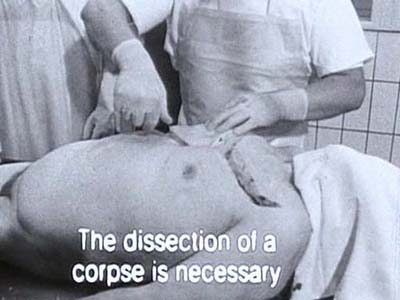
The Oswego man charged with fatally shooting his wife and their three school-age children told police he was having marital problems caused by his affair in Mexico seven months earlier and his wife’s lack of interest in adopting his Druid beliefs.
{ Chicago Breaking News | Continue reading }
A controversial alternative health guru is suing after a taste of his own medicine nearly killed him.
Gary Null - described on quackwatch.org as “one of the nation’s leading promoters of dubious treatment for serious disease” - claims the manufacturer of Gary Null’s Ultimate Power Meal overloaded the supplements with Vitamin D.
The buff “Joy of Juicing” author, whose products include Red Stuff Powder and Gary Null’s Heavenly Hair Cleaner, claims he suffered kidney damage and was left bloodied and in intense pain from two daily servings of the supplement.
{ NY Daily News | Continue reading }
A Newport Beach man attempting to steal a pornographic magazine shoved a liquor store owner so fiercely that the man flew through the air and landed on the back of his head.
The owner died the day after the vicious attack on July 28, 2007 from a fractured skull and massive bleeding in the brain.
{ The Orange County Register | Continue reading }
related { Man killed in bizarre high speed crash. }
drugs, fights, gross, horror, incidents, pipeline, weirdos |
April 29th, 2010
relationships |
April 28th, 2010

Imagine two cities, one to the north of where you live and one an equal distance to the south. Should it take longer to drive to the northern city than to the southern one? Of course not. But evidence suggests we subtly believe that going north is more time-intensive than going south.
In this recent study by Leif Nelson and Joseph Simmons in the Journal of Marketing Research, a number of subjects were asked to estimate the travel time for a northbound versus southbound bird. The majority of respondents believed traveling north from the equator would take longer than the reverse. (…)
This striking study reminds us of an essential, if often underappreciated, truth about transportation: Our ideas about where and how to travel, what routes to use and how long they will take, are all prone to subtle distortions that may ultimately shape our decisions about where to go and why. As geographer Colin Ellard notes in his book You Are Here: Why We Can Find Our Way to the Moon, but Get Lost in the Mall, “unlike other animals, which are tightly anchored, body to ground, fixed to the earth with a sureness of footing than can be almost impossible to sunder, human beings seem preternaturally prone to a kind of spatial flight of fancy in which our minds sculpt physical space to suit our needs.”
The north-south imbalance is just one of any number of ways we rearrange objective time and space in our heads. There are the famous examples of geographical distortion, for example, in which people routinely assume that Rome is farther south than Philadelphia or that San Diego is west of Reno (when in both cases the opposite is true). Or take a simple trip into town: Studies have found that people tend to find the inbound trip to be shorter than the outbound trip, while a journey down a street with more intersections will seem to be longer than one with fewer (and not simply because of traffic lights).
Our state of mind on any trip can influence not just our perceptions of time but of geography itself.
{ Slate | Continue reading }
photo { Todd Hido }
psychology |
April 28th, 2010





